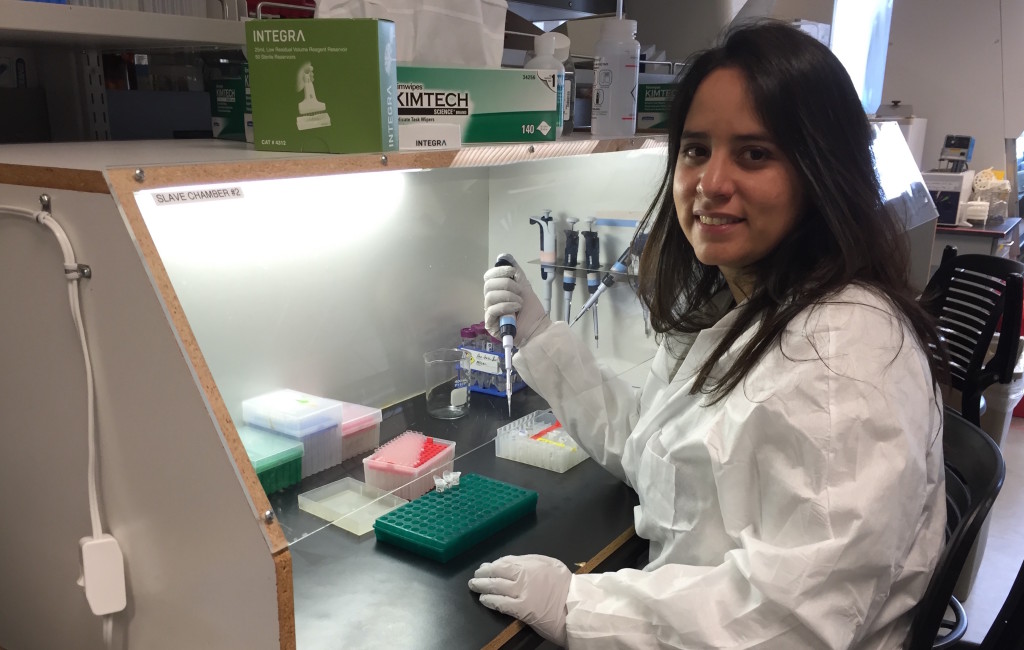Veronica Barragan, a doctoral student from Ecuador studying leptospirosis–a prevalent disease in her home country and an emerging one here in the United States–has made some strides in understanding the potentially deadly disease.
The Northern Arizona University biology researcher discovered ways to detect the pathogen that is now used to understand how it is being passed from animals to humans. The disease, also called “lepto,” is primarily spread by animal urine. When passed to humans, it can develop into kidney damage, liver failure, and in rare cases, death.
Barragan has been busy gathering and testing sources in a rural coastal community in Ecuador in hopes of learning more about transmission of the disease.
“When we started this project three years ago, we believed water was a major source of lepto but didn’t know why or how,” said Barragan, who performed much of the lab work at the Center for Microbial Genetics and Genomics at NAU. “We questioned whether environmental factors might lead to the ability to predict when there will be a risk of leptospirosis in rivers at certain times of the year.”
Barragan tested 150 water samples, approximately four gallons of water per sample, and much to her surprise, no pathogenic lepto was found in the water.
“Unfortunately, rainfall in 2014–during the sampling–was the lowest on record in 50 years and could have affected our results as lepto is found in animal urine and spreads through water ways with rain,” Barragan noted. “We also found that it does not culture easily. Sometimes it doesn’t grow or it takes three or more months.”
Despite the challenges, Barragan was able to develop a molecular assay that detects a signature in the DNA of the pathogen that will allow researchers to detect it in the environment, humans and animals.

Statistically, rats have been major carriers of urban disease but Barragan’s research on lepto showed farm animals were the main carrier, and their urine transmitted the pathogen to humans.
Rain compounds the spread of contaminated animal urine through ground soil and water ways leading Barragan to conclude the “bigger problem in the spread of the disease is the rural environment in which wildlife carry the pathogen.”
Leptospirosis is easily contracted through small skin abrasions. In farming communities, residents are frequently barefoot providing easy access for the pathogen. The disease generates a range of symptoms including fever, headache and chills.
Eradicating the disease is impossible because there are 10 species of pathogenic leptospira making comprehensive vaccine development very challenging. In light of this, the goal is to better communicate how to prevent contraction.
Barragan and her research colleagues are working on a grant proposal which would allow them to link the disease with the source and relate it to the daily life of residents.
“I am thrilled to report the health minister of Ecuador is sharing an incident database with us and will be publishing our paper on leptospirosis, the first of its kind in the country,” said Barragan. “We are working hard to ensure our research helps control this growing disease in all parts of the world.”



